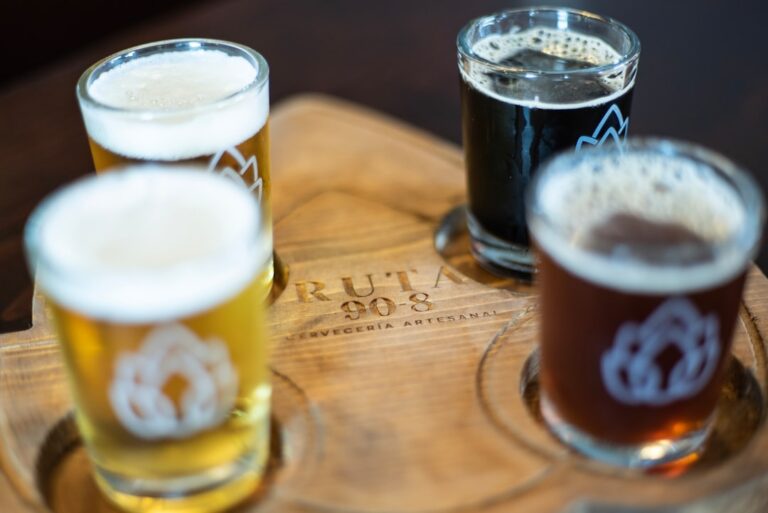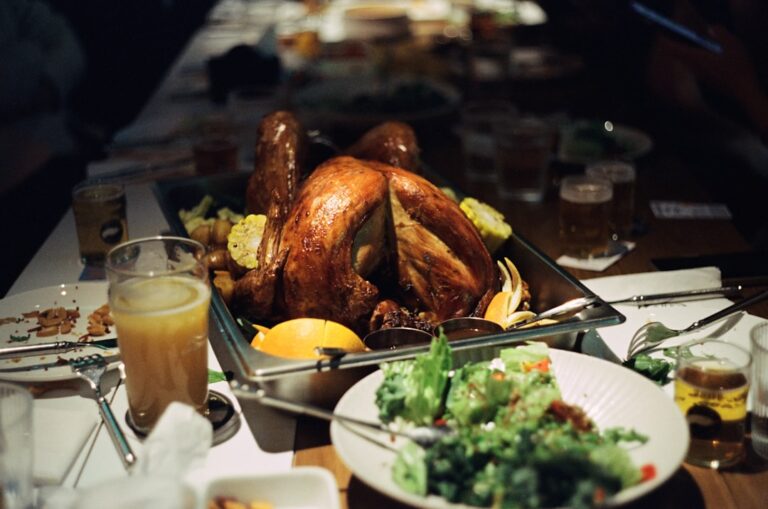Thanksgiving Trivia: An Exploration of Tradition and History Thanksgiving is a beloved holiday in the US, marked by feasts, family get-togethers, and an attitude of thankfulness. But this holiday has deep roots that are entwined with heritage, culture, and history. This article will discuss the history of Thanksgiving, how its customs have changed over time, and how important heritage sites are to conserving & promoting this important holiday. Understanding Thanksgiving’s beginnings is crucial to appreciating it fully. When English Pilgrims first arrived in North America in the early 17th century, the holiday was born. Need Weekly Trivia Questions? https://cheaptrivia.com/products/weekly-trivia-subscription-service
Key Takeaways
- Thanksgiving has its origins in the 1621 harvest celebration between the Pilgrims and Wampanoag Native Americans.
- Thanksgiving traditions have evolved over time, influenced by various cultural and historical factors.
- Heritage sites play a crucial role in connecting people to the history and significance of Thanksgiving.
- Heritage sites preserve and educate visitors about the historical context and cultural impact of Thanksgiving.
- Thanksgiving at heritage sites is a living history that continues to evolve and educate people about its significance.
The Wampanoag were invited to join the Pilgrims at a harvest feast in 1621 to commemorate their bountiful crop yield. Considered by many to be the first Thanksgiving, this event represents gratitude and collaboration between two different cultures. When you learn more about Thanksgiving’s beginnings, you’ll discover that it wasn’t initially recognized as a holiday. Various colonies observed it intermittently, usually as a day of prayer and gratitude for a plentiful harvest.
Thanksgiving was not a yearly event observed on the fourth Thursday of November until 1863, when President Abraham Lincoln declared it a national holiday. With a focus on themes of thankfulness and unity, this declaration sought to bring a nation split by civil war together. The Development of Thanksgiving Cooking.
With the passage of time, these customs started to include aspects from different American cultures and areas. Thanksgiving has come to be associated with pumpkin pie, cranberry sauce, stuffing, and turkey. Turkey became a popular choice for festive meals in the early 19th century, which is when the custom of eating it began. Contemporary Thanksgiving Festivities. Football games & parades have also become essential components of contemporary Thanksgiving festivities.
For example, the Macy’s Thanksgiving Day Parade has been a mainstay since 1924 and features intricate floats & performances that unite local communities. A moment for community & unity. Thanksgiving has, all things considered, developed into a gathering place that promotes unity and a sense of community.
When it comes to introducing people to Thanksgiving’s past, heritage sites are essential. Artifacts, records, and anecdotes that represent the various perspectives surrounding the holiday are frequently preserved at these locations. An immersive experience that replicates the Pilgrims’ settlement and their interactions with Native Americans is provided by Plimoth Plantation in Massachusetts, for example. Going to heritage sites gives you a hands-on opportunity to interact with history. Discover the traditions that influenced Thanksgiving as it is observed today, take part in traditional activities, & tour restored homes.
A greater comprehension of the holiday’s cultural significance and its influence on American society is fostered by these encounters. History is preserved by heritage sites, which make sure that Thanksgiving tales are not forgotten. They provide educational programs that highlight the complexities of the holiday’s origins and its evolution over the years. Through interactive exhibits, workshops, and guided tours, these locations give visitors the chance to actively engage with history.
Also, heritage sites frequently work with educators and historians to create materials that raise awareness of Thanksgiving’s complex nature. This partnership promotes critical analysis of the narratives surrounding the holiday and helps debunk myths. Heritage sites greatly advance our knowledge of the historical background of Thanksgiving by conserving artifacts and disseminating information. Thanksgiving is significant at heritage sites for reasons other than just historical preservation; it also involves community involvement and cultural reflection.
People from different backgrounds are invited to share their experiences and stories at these sites, which frequently host events that celebrate the many Thanksgiving customs. For instance, a lot of heritage sites host communal feasts that feature customary foods from various cultures. This promotes inclusivity and understanding among various populations in addition to honoring the original spirit of Thanksgiving.
You can learn more about how various communities commemorate thankfulness & unity during this unique time of year by taking part in these events. from storytelling to reenactments. Many heritage sites today place a strong emphasis on using storytelling to help visitors connect with the past. This method enables a more complex comprehension of Thanksgiving’s nuances, including how it affects Indigenous peoples and their cultures. A deeper comprehension of the past.
Heritage sites inspire visitors to consider their own connections to history & culture by emphasizing these stories. An approach to the past that is more deliberate & sympathetic is made possible by this change in perspective. An Era of Remembrance. Heritage sites are now crucial venues for promoting a better knowledge and appreciation of the various experiences and viewpoints that have shaped our shared past. Thanksgiving has a significant cultural impact on heritage sites. These venues provide forums for discussions on tradition, identity, and communal values.
Heritage sites help people understand what it means to celebrate gratitude in modern society by presenting a variety of Thanksgiving viewpoints. Numerous heritage sites also take part in outreach initiatives to increase their impact outside of their actual locations. They might collaborate with educational institutions or neighborhood associations to support educational programs that delve into the background and meaning of Thanksgiving. For those who might not have direct access to these historical sites, this outreach helps them feel connected. In order to comprehend the historical background of Thanksgiving at heritage sites, it is necessary to look at both the holiday’s more difficult and celebratory narratives.
Although Thanksgiving is often associated with family get-togethers and feasts, its complicated history of colonization and cross-cultural interaction must be acknowledged. Resources that encourage visitors to interact critically with this history are frequently offered by heritage sites. By offering a variety of perspectives, including those of colonized Indigenous peoples, these websites promote a more thorough comprehension of Thanksgiving’s history.
This method fosters empathy & respect for the experiences of people from different cultural backgrounds in addition to expanding your knowledge. Heritage websites are excellent teaching tools for Thanksgiving education. These programs are designed for a range of audiences, such as school groups, families, & adults who want to learn more about the past. Through interactive exhibits, lectures, and hands-on activities, these sites provide visitors with memorable educational experiences.
Many heritage sites also create educational resources that can be utilized in community or classroom settings. Lesson plans, historical records, and multimedia materials are frequently included in these resources to assist teachers in meaningfully teaching about the significance of Thanksgiving. By offering these resources, heritage sites enable people to delve deeper into history than is typically told. Thanksgiving is a living tradition that keeps changing over time, not just a historical occurrence.
By actively involving visitors in conversations about how modern celebrations both reflect and adapt to historical customs, heritage sites embrace this idea. For example, at special events or workshops, many heritage sites invite guests to share their own family customs. In addition to demonstrating the variety of ways people express gratitude in today’s world, this exchange promotes a sense of community. Engaging in these discussions can help us gain a deeper comprehension of how Thanksgiving continues to be significant in our lives. Finally, preserving and educating people about heritage sites while commemorating Thanksgiving provides a special chance to engage with the past and cultivate an appreciation for various cultural narratives.
These locations are crucial to the preservation of artifacts and narratives that shed light on the complexity of this well-loved holiday. As you think back on your own Thanksgiving festivities this year, think about going to a nearby historical site or taking part in educational activities that delve into the region’s past. By doing this, you not only pay tribute to the past but also help create a broader definition of what it means to be grateful in the modern world. During this unique time of year, embrace the chance to learn from the past while honoring the thankfulness that binds us all.
If you’re interested in learning more about Thanksgiving trivia, you should check out this article on 10 Thanksgiving Facts About Food Guests Will Talk About All Night. This article provides interesting facts about Thanksgiving food that will surely spark conversation at your holiday gathering. It’s a fun way to learn more about the history and traditions of Thanksgiving while enjoying delicious food with loved ones.
GRAB YOUR FREE HOLIDAY TRIVIA PACKS
FAQs
What is the significance of Thanksgiving in American history?
Thanksgiving is a national holiday in the United States, celebrated on the fourth Thursday of November. It commemorates the harvest festival celebrated by the Pilgrims in 1621, and is a time for families and friends to come together and give thanks for the blessings of the past year.
What are some popular traditions associated with Thanksgiving?
Some popular traditions associated with Thanksgiving include the Thanksgiving meal, which typically includes turkey, stuffing, cranberry sauce, and pumpkin pie. Other traditions include watching parades, playing football, and expressing gratitude.
How can heritage sites incorporate history-driven Thanksgiving quiz questions into their programming?
Heritage sites can incorporate history-driven Thanksgiving quiz questions into their programming by creating interactive quizzes that test visitors’ knowledge of Thanksgiving history, traditions, and cultural significance. These quizzes can be incorporated into guided tours, educational programs, and special events.
What are some examples of history-driven Thanksgiving quiz questions for heritage sites?
Some examples of history-driven Thanksgiving quiz questions for heritage sites include questions about the origins of Thanksgiving, the history of the Thanksgiving meal, the role of Native Americans in the first Thanksgiving, and the evolution of Thanksgiving traditions over time.
How can history-driven Thanksgiving quiz questions enhance the visitor experience at heritage sites?
History-driven Thanksgiving quiz questions can enhance the visitor experience at heritage sites by providing an engaging and educational way for visitors to learn about the history and cultural significance of Thanksgiving. These quizzes can also encourage visitors to think critically about the holiday and its traditions.






